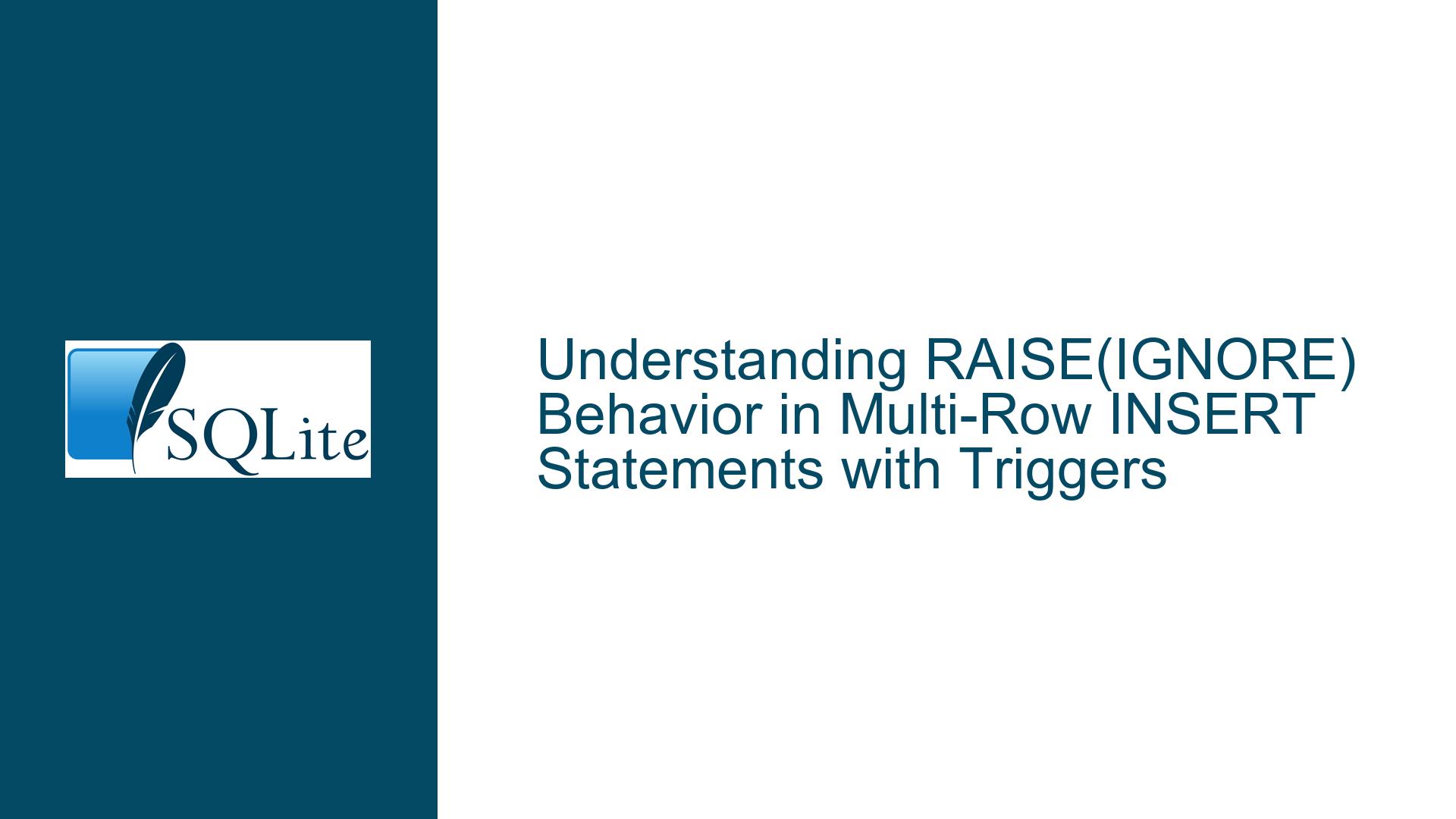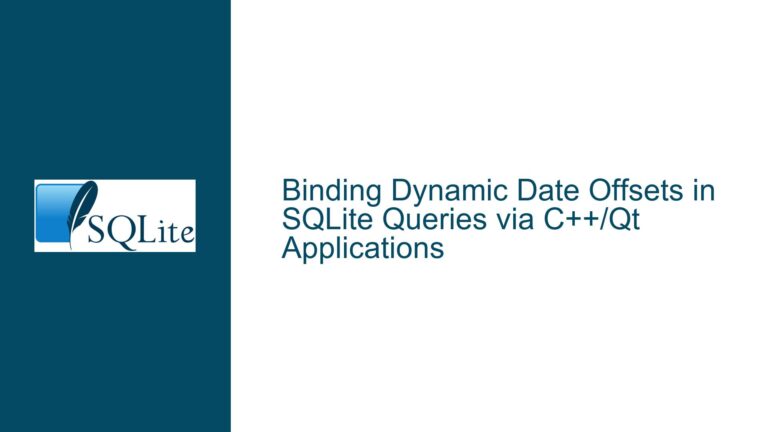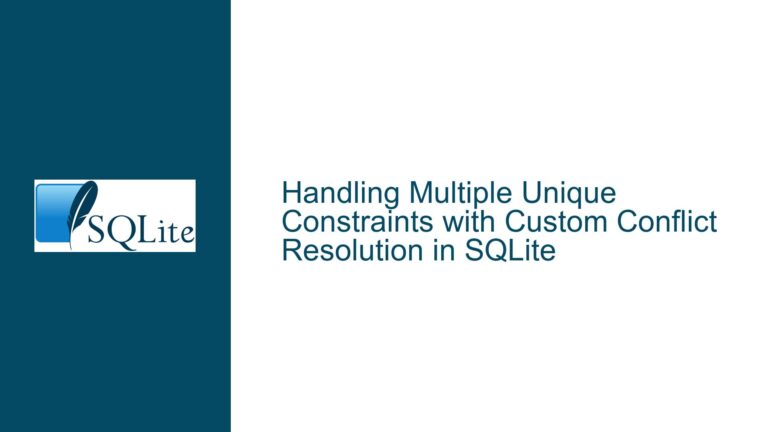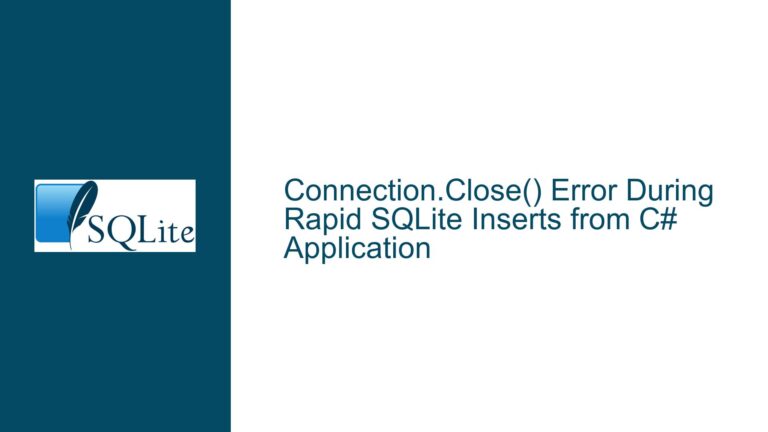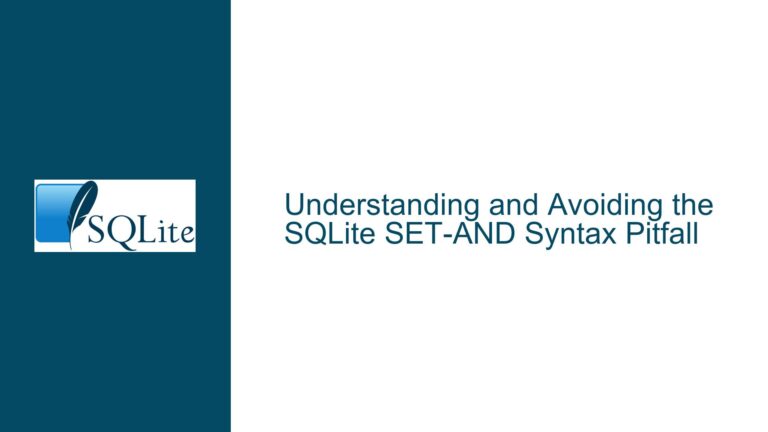RAISE(IGNORE) Behavior in Multi-Row INSERT Statements with Triggers
Interaction Between RAISE(IGNORE), AFTER INSERT Triggers, and Multi-Row INSERT Execution
Issue Overview
The core issue revolves around the behavior of the RAISE(IGNORE) command within an AFTER INSERT trigger when used in conjunction with a multi-row INSERT statement. The documentation states that when RAISE(IGNORE) is invoked, the current trigger program, the statement that caused the trigger to execute, and any subsequent trigger programs are abandoned. However, observed behavior in a test case suggests that rows listed after the row triggering RAISE(IGNORE) might still be inserted into the table. This raises questions about the precise meaning of "abandoning the statement" and whether the order of row processing in multi-row INSERT statements is guaranteed.
The test case involves a table x(a) and an AFTER INSERT trigger that deletes the newly inserted row and invokes RAISE(IGNORE) if the inserted value of a exceeds 5. When inserting four rows (3), (-1), (18), (-7), the third row (18) triggers the RAISE(IGNORE) action. The expectation is that the INSERT statement would halt immediately, leaving only the first two rows (3 and -1) in the table. However, the observed result includes -7, the fourth row in the INSERT statement. This discrepancy highlights ambiguity in how RAISE(IGNORE) interacts with multi-row operations and whether SQLite guarantees row processing order in such statements.
Possible Causes
Row Processing Order in Multi-Row INSERT Statements: SQLite does not explicitly guarantee that rows in a multi-row
INSERTstatement will be processed in the order they appear in theVALUESclause. While generatedROWIDvalues often suggest sequential insertion, the actual order of execution is implementation-dependent. If rows are processed out of order, theRAISE(IGNORE)might be triggered after subsequent rows have already been inserted, leading to unexpected results.Misinterpretation of "Abandoning the Statement": The documentation specifies that
RAISE(IGNORE)abandons the statement that caused the trigger to execute. However, "abandoning" does not imply rolling back changes made by the statement prior to theRAISE(IGNORE). If theINSERTstatement has already processed some rows before encounteringRAISE(IGNORE), those rows remain in the database. The ambiguity lies in whether "abandoning" prevents further rows from being processed or merely halts trigger execution.Trigger Execution and Side Effects: The
AFTER INSERTtrigger in the test case modifies the table by deleting the newly inserted row. This action might interact with SQLite’s internal cursor management or transaction handling, inadvertently allowing subsequent rows to be processed even afterRAISE(IGNORE)is invoked. Additionally, the use ofSELECT RAISE(IGNORE)instead ofSELECT RAISE(ABORT, ...)might introduce unintended behavior in trigger flow control.
Troubleshooting Steps, Solutions & Fixes
To resolve the ambiguity and ensure consistent behavior, follow these steps:
Validate Row Processing Order:
Insert rows individually in separate
INSERTstatements to isolate the effect ofRAISE(IGNORE). For example:INSERT INTO x VALUES (3); INSERT INTO x VALUES (-1); INSERT INTO x VALUES (18); -- Triggers RAISE(IGNORE) INSERT INTO x VALUES (-7);If the fourth row (
-7) is not inserted in this scenario, it confirms that multi-rowINSERTprocessing order is the root cause.Use explicit
ROWIDassignments to track insertion order:INSERT INTO x VALUES (3), (-1), (18), (-7); SELECT a, ROWID FROM x;If the
ROWIDof-7is lower than that of18, it indicates non-sequential processing.
Clarify "Abandoning the Statement":
- Modify the trigger to log actions into a temporary table or use
PRAGMA temp_store = MEMORY;to track the exact sequence of operations. For example:CREATE TEMP TABLE trigger_log (msg TEXT); CREATE TRIGGER zz AFTER INSERT ON x FOR EACH ROW WHEN NEW.a > 5 BEGIN INSERT INTO trigger_log VALUES ('Deleting row ' || NEW.a); DELETE FROM x WHERE ROWID = NEW.ROWID; INSERT INTO trigger_log VALUES ('Raising IGNORE for ' || NEW.a); SELECT RAISE(IGNORE); END;After executing the
INSERTstatement, querytrigger_logto see if the fourth row’s insertion was logged before or after theRAISE(IGNORE).
- Modify the trigger to log actions into a temporary table or use
Adjust Trigger Logic for Predictable Outcomes:
Use
BEFORE INSERTtriggers to prevent invalid rows from being inserted, avoiding the need for post-insert cleanup:CREATE TRIGGER zz BEFORE INSERT ON x FOR EACH ROW WHEN NEW.a > 5 BEGIN SELECT RAISE(IGNORE); END;This skips insertion of rows where
a > 5entirely, ensuring no partial inserts.Replace
RAISE(IGNORE)with explicit transaction control if atomicity is required:BEGIN TRANSACTION; INSERT INTO x VALUES (3), (-1), (18), (-7); COMMIT;If an error occurs, roll back the transaction manually. Note that
RAISE(IGNORE)does not roll back transactions, so this approach requires careful error handling.
Leverage SQLite’s Error Handling Mechanisms:
- Use
RAISE(ABORT, ...)instead ofRAISE(IGNORE)to force transaction rollback and terminate the statement immediately. However, this affects the entire transaction, not just the current statement.
- Use
Consult SQLite Internals and Documentation:
- Review SQLite’s
vdbe.csource code (virtual machine for executing statements) to understand how multi-rowINSERTstatements are processed. TheOP_Insertopcode and cursor management logic determine row processing order. - Cross-reference with the
trigger.cmodule to see howRAISE(IGNORE)interacts with the execution stack.
- Review SQLite’s
Final Recommendations
To avoid ambiguity in multi-row INSERT statements with triggers:
- Assume no guaranteed row processing order unless explicitly controlled via
ROWIDor auto-incrementing keys. - Use
BEFORE INSERTtriggers for validation to prevent invalid rows from being inserted. - Avoid relying on
RAISE(IGNORE)to terminate multi-row statements atomically; instead, structure transactions to handle partial failures. - Test edge cases with explicit logging to validate assumptions about SQLite’s behavior.
By combining these strategies, developers can ensure predictable outcomes when using triggers and error-handling mechanisms in SQLite.
